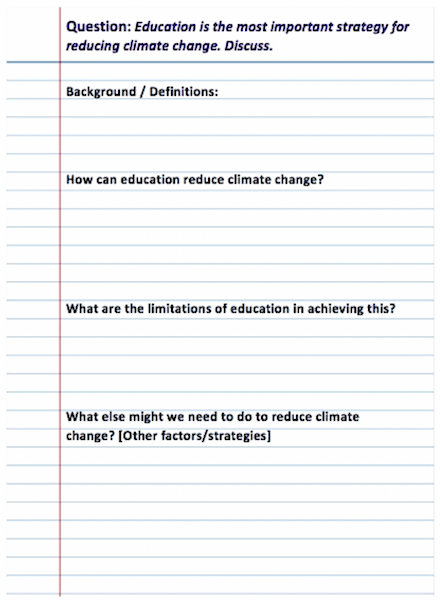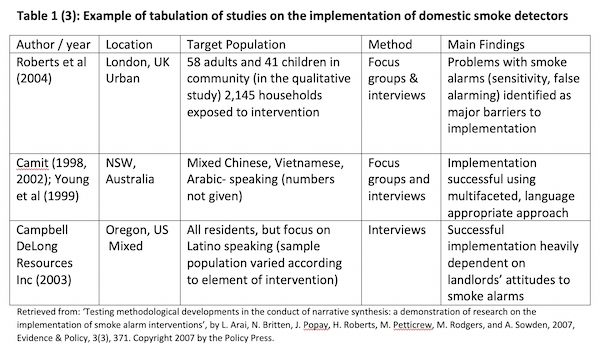Note taking
Tips to help you take notes and synthesise ideas from readings efficiently and effectively.
Nine tips for note taking and synthesising
It’s important to take notes while reading, as it helps you to critically engage with the text (improving your understanding), avoid accidental plagiarism and identify, record and synthesise themes without having to go back and re-read later on.
-
It’s important to take notes while reading, as it helps you to critically engage with the text (improving your understanding), avoid accidental plagiarism, and identify, record and synthesise themes without having to go back and re-read later on.
You might choose to make notes on paper, digitally, by annotating or by reproducing. Your purpose for taking notes will help you work out the most effective method. For example, you might use:
- a list to summarise a paper;
- a mind map to represent connections and identify emerging themes; or
- a table to synthesise and compare ideas thematically.
Whichever method you use, the key thing is to take notes in your own words. It can be tempting to simply highlight or underline as it seems quicker, but you may end up wasting time going back to re-read.
-
Avoid accidental plagiarism by taking full bibliographic details of everything you read and distinguishing carefully between direct quotes (taken word for word), paraphrases (the ideas of others expressed in your own words), and your own words and ideas. Record the page number of each passage that you paraphrase and each quotation you copy. It might help to:
- highlight direct quotes or use a colour coding system (e.g. blue for direct quotes, red for paraphrased passages, and yellow for your own ideas and thoughts).
- use symbols or letters to distinguish direct quotations from paraphrases and summaries (e.g. Q, P, S).
-
You don’t need to record everything. Look for the main points of a text. Ask yourself:
- What is the writer’s main contention or idea?
- What evidence or examples are used to support that idea?
- What conclusion does the writer reach?
- Where do you stand in relation to that contention or conclusion?
-
This is the best way of ensuring that you understand the material you are using. It also means that you have already done the work of paraphrasing the ideas from the original source if you want to use them in your paper. Don’t forget to note down the bibliographic details.
-
The more you read, the more focused your ideas will become. Keep thinking about how what you’re reading reinforces, contradicts, or suggest alterations to your original brainstormed ideas and plan. As you do more reading, you may need to change or develop your plan.
-
Rather than simply copying the information, evaluate what you’re reading continuously. Consider the reliability, validity and usefulness of the paper, as well as how it relates to other readings and your own task.
-
This will help you to refine your notes and record information that is relevant to the task. You can go one step further and list the information under different sections of your paper, helping you to know when you have enough information.
- Does it provide a useful explanation, example, or definition?
- Would it help you to explain the context/background?
- Does it provide evidence or reasoning for your argument?
- Does it provide evidence to counter your argument?
-
You need to develop a sense for when you have read enough material to develop a well-thought-out, well-researched paper. Remember that other readings merely support and help substantiate your own ideas. Your ideas and analysis are going to be the bulk of the paper. You have done enough reading when you have formulated a clear argument, supported by relevant and up-to- date research in your field.
-
Synthesising involves comparing and contrasting the ideas of different authors, critically evaluating their contributions to the topic/field, interpreting what their findings mean, and drawing your own conclusions about the topic. This is the step that helps you to identify your argument or position.
Once you’ve finished reading, review your notes and look for:
- Any words / ideas that are repeated.
- Differences in approach.
- Conflicts / areas of disagreement / contradictions.
- Consensus, or areas of agreement.
Three methods of categorising and organising information
Below are three different methods of categorising and organising information. Choose the one that works best for you – although, you may find you use different methods for different assignments.
-
Before you start reading, create a brief plan for your paper. Include the task or question, section headings with keywords, topics and questions. For example:

As you read, write directly into this plan under each heading, remembering to include referencing details of the source so you can find it again. This helps you to organise the information topically. Framing your headings as questions can help you to be more critical in your note-taking.
-
Organise information in columns and rows according to topic/theme/author/location etc. Make sure you record your source with enough detail for you to locate it. The example below categorises research on the implementation of domestic smoke detectors, allowing us to easily compare different studies by location/setting, target population, method and major findings.

-
You can either buy note cards or use recycled paper (they're usually about 8 x 12cm). The idea is to note different ideas on separate cards so you can physically move them around to identify themes and connections. There are 4 steps:
- Note down each key idea on a card – one idea per card (including reference details and page number).
- Spread the cards out, read through them and see if you can notice any themes.
For example, if your research was on strategies for health promotion, you might find key areas of (1) government intervention (e.g policies), (2) education and (3) grassroots initiatives such as local sporting clubs.
- Move the cards around until they are grouped under the themes you identified in step 2.
- Read through the cards in each pile. Compare and contrast how different authors deal with that theme.
A final tip
Developing your note-taking skills will help you to evaluate research and present a clear, supported response to the task. It’s worth taking time to think about how you want to manage your reading and note taking early, as this can save time later on.

Looking for one-on-one advice?
Get tailored advice from an Academic Skills Adviser by booking an Individual appointment, or get quick feedback from one of our Academic Writing Mentors via email through our Writing advice service.